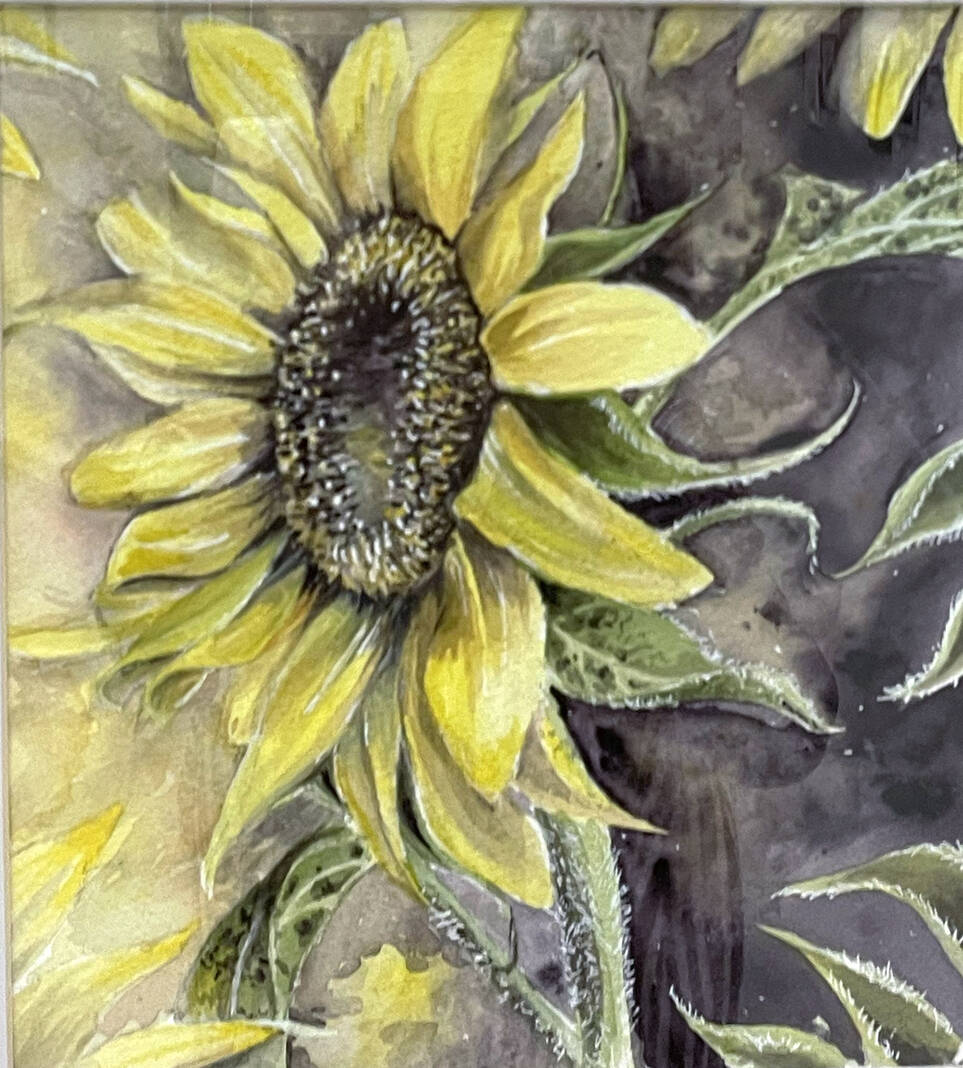|
Only have a minute? Listen instead
Getting your Trinity Audio player ready...
|
The Hidalgo Watercolor Society’s annual show is currently on display at the Kika de la Garza Fine Arts Center.
Shirley Ingram, Upper Valley Art League member, curated “HWS Water Works,” which consists of 84 works by 19 artists and offers watercolor fans a large exhibition of mostly traditional works.
The dominant methodology is the “pure” watercolor technique, where no white or other opaque pigment is applied. Color intensity and tonal depth are built up by successive transparent washes on damp paper; areas of the white paper representing white objects and the effects of reflected light are left unpainted. A pinnacle of this technique is seen in Bonnie Fogg’s “like Angel Wings,” a stunning depiction of an open-winged Heron.
“HWS Water Works” is a comfortable show with representational depictions capturing subjects dear to its artists. There is a surprising absence of urban scenes and structures in this collection, even though many of these artists are well traveled; this reflects a desire to linger in the more peaceful rural environments.

Watercolor
(Courtesy: Nancy Moyer)
The works are arranged by subject matter with enough sunflowers and related yellow-petaled flower imagery to appear in groupings on two walls; they are appreciated as subjects in cut form as well as growing in the sunlight. Floral motifs are abundant and well done, and “Juanita’s Hibiscus” by Freddie Harmon stood out for me due to her unusual point of view. Forsaking the often-beloved entire blossom, Harmon zoomed in on the center of the flower, focusing on the stamen as it shoots forth in a glorious and unrestrained appeal to the prospective pollinator.
The islands of miniature watercolors in the central area form a sub-show of their own, and Betty Vermeer’s nostalgic farmland, “Misty Memories,” is notable.
On a larger scale her “Barnacled Rope” comments on the persistence of the sea and its inhabitants. While we take barnacles on boats and piers for granted, Vermeer brings us in close for the unexpected experience of seeing them forming on a flexible piece of rope. A few portraits include imaginative plays on the human face, and detailed perceptions of domestic animals, wildlife, and nostalgic landscapes allow the viewer to experience the artist’s close relationship with their environment.

Watercolor
(Courtesy: Nancy Moyer)
For the indoor types, Dennis Grover returns with sharply realistic portrayals of steel boot spurs, but it’s his ‘Scroll and Peg Box’ painting that leaves those spurs in the esthetic dust. Here, part of a violin has diagonally plunged into the picture plane, and rests upon a lace tablecloth whose patterns evoke a compositional counterpoint — a rhythmic flow suggesting the music that might be played.
“Mother Nature Speaking” by Anna Varela stands out by denying the pure watercolor style found elsewhere in the show. Human figures are mixed with flora and fauna, symbolism, and abstraction, all injected with colors saturated to a psychedelic acidity denoting a visual feeling of phrenetic and unstoppable life. Watercolor painting has been part of human activity for thousands of millennia. Paleolithic peoples mixed available mineral pigments with water to depict animal species, human histories, and origin stories in cave/rock paintings. Continued as manuscript illustration since at least Egyptian and Mayan times, it flourished in the European Middle Ages and China.
Today’s water-based paints have evolved to include stabilizers, plastics, and even synthetic colors that are safer than several of the natural colors, such as the cadmium group.
‘HWS Water Works’
WHERE: Kika de la Garza Fine Arts Center, 921 E. 12th St., Mission
WHEN: Through Feb. 24
HOURS: 10 a.m. to 6 p.m. Wednesday through Friday, 10 a.m. to 2 p.m. Saturday
CONTACT: (956) 591-0282 or www.uppervalleyartleague.org
COST: Free and open to the public

Watercolor
(Courtesy: Nancy Moyer)

Watercolor
(Courtesy: Nancy Moyer)

Watercolor
(Courtesy: Nancy Moyer)

Watercolor
(Courtesy: Nancy Moyer)

Watercolor
(Courtesy: Nancy Moyer)
Nancy Moyer, Professor Emerita of Art, is an art critic for The Monitor. She may be reached at [email protected].



